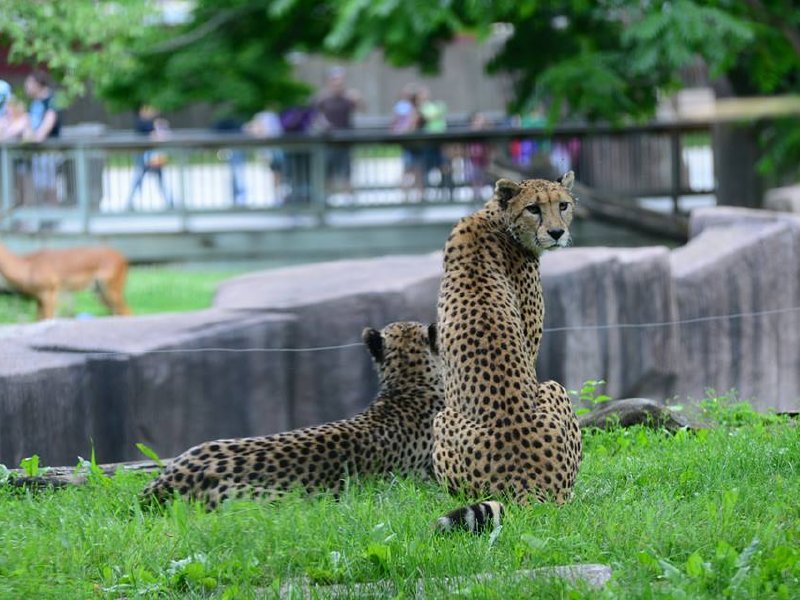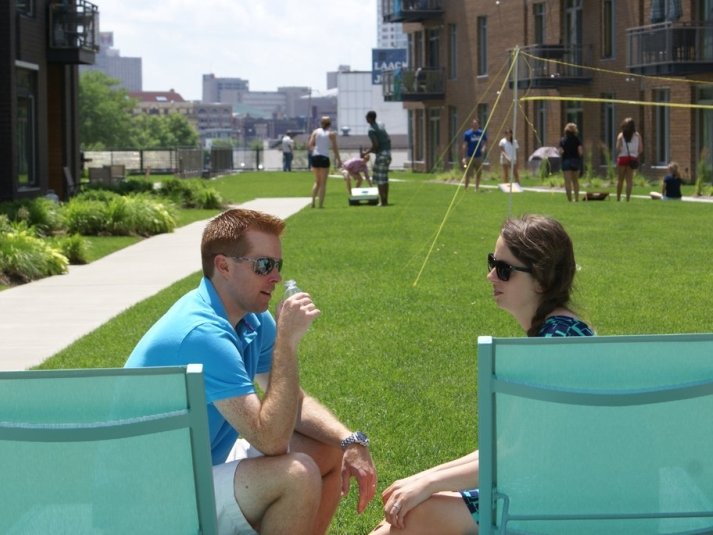To help highlight MMSD Green Luminaries awards, we’re focusing on the winners by asking about their practices and new environmental approaches.
MMSD's goal is to create enough green infrastructure in the region to capture 740 million gallons of water every time it rains, to reduce water pollution and improve Lake Michigan and our rivers.
Last month, we talked with All People's Church.
Today, it’s the Milwaukee County Zoo. I spoke with Jennifer Diliberti-Shea, Public Relations Coordinator at the Milwaukee County Zoo about the zoo's green focus and more.
OnMilwaukee.com: How is the zoo working to make the grounds more environmentally friendly?
Jennifer Diliberti-Shea: For the past number of years, the zoo has been constructing and implementing a significant number of rain gardens, special permeable pavers for storm runoff water, roof water collection systems and even a green roof on top of our Conservation Education building.
Lake Evinrude at the Milwaukee County Zoo.
OMC: How do you balance these needs with those of being a big-time event destination for the public?
JDS: Because the Milwaukee County Zoo’s mission is one of conservation, I believe our visitors look to us to be leaders in environmentally-conscious practices throughout our grounds.
OMC: Tell us about your rain garden project, please.
JDS: We have several rain gardens throughout our 200-acres of parkland that make up the zoo. The rain gardens put to use permeable pavers which direct the rainwater into various gardens and plantings throughout the park. This water seeps through the ground and then is filtered and cleaned, and runs off into the gardens.
OMC: How do you best manage the woods, ponds and planted areas at the zoo?
JDS: At the zoo, we have a full-time horticulture staff and a forestry manager that plants and maintains not only the plantings throughout the park, but also the forest and ponds. Our safety coordinator at the zoo also is involved in managing the ponds and Lake Evinrude from an environmental standpoint – making certain it is safe and pleasing to our visitors.
OMC: What’s the biggest thing that would surprise us about the zoo and its day-to-day operations?
JDS: In talking about our horticulture staff, on average, this group plants approximately 40,000 annuals, perennials, woody shrubs and trees on an annual basis. The staff also maintains two large greenhouses on grounds on a year-round basis.
OMC: What’s new this fall at the Milwaukee County Zoo?
JDS: Visitors this fall can visit our newest resident – a male western lowland gorilla named Sulaiman. Sulaiman was born in November of 2014 – the first gorilla birth for the zoo since 1992!
OMC: Finally, define success for the zoo.
JDS: Success for the zoo means we can provide an excellent experience for our 1.3 million-plus visitors each year – with our varied and exceptional animal collection, while also following our core mission of animal management and global conservation.
A life-long and passionate community leader and Milwaukeean, Jeff Sherman is a co-founder of OnMilwaukee.
He grew up in Wauwatosa and graduated from Marquette University, as a Warrior. He holds an MBA from Cardinal Stritch University, and is the founding president of Young Professionals of Milwaukee (YPM)/Fuel Milwaukee.
Early in his career, Sherman was one of youngest members of the Greater Milwaukee Committee, and currently is involved in numerous civic and community groups - including board positions at The Wisconsin Center District, Wisconsin Club and Marcus Center for the Performing Arts. He's honored to have been named to The Business Journal's "30 under 30" and Milwaukee Magazine's "35 under 35" lists.
He owns a condo in Downtown and lives in greater Milwaukee with his wife Stephanie, his son, Jake, and daughter Pierce. He's a political, music, sports and news junkie and thinks, for what it's worth, that all new movies should be released in theaters, on demand, online and on DVD simultaneously.
He also thinks you should read OnMilwaukee each and every day.







